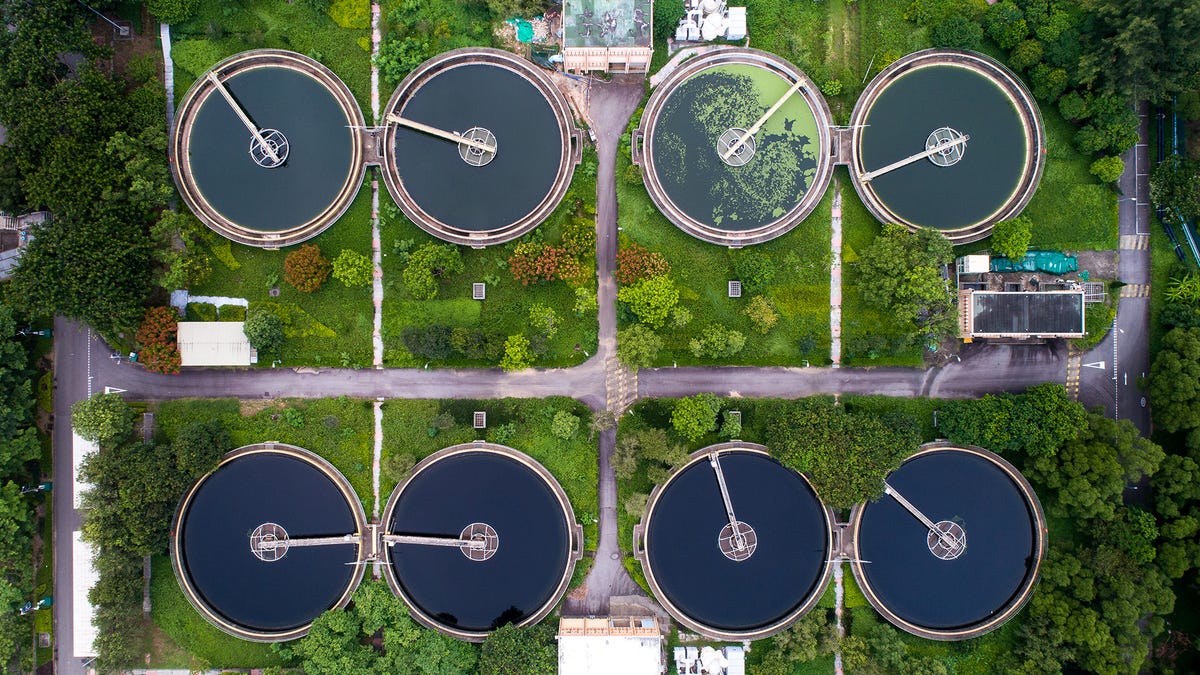Purifying and Mining Wastewater Could Safely Address Global Water Shortage
Scientists are transforming wastewater pollution into a valuable resource.

Wastewater treatment produces toxins, but scientists think they can turn them into treasure.
Tuesday is World Water Day, a day set aside to draw awareness to the fact that billions of humans across the globe are living without access to clean drinking water. That's about 1 in 4 people -- a disproportionate number of whom reside in poverty-stricken areas.
But with any luck we'll see that jaw-dropping statistic shrink in the coming years, because scientists have been steadily coming up with innovative ways to bolster humanity's freshwater supply. Among those strategies is the purification of wastewater, which simply put converts sewage water back into clean drinking water. It's a promising method to help us have a good deal more H2O to go around.
One mechanism for doing this, dubbed anaerobic filtration, is popular because it uses very little energy to convert lots of sewage water into a consumable form. But there's a glaring issue. While cleaning up water, anaerobic filtration tends to create dangerous byproducts called sulfides. These are extremely harmful to our health and to the environment.
The US Centers for Disease Control and Prevention, for instance, writes that inhaling hydrogen sulfide could lead to symptoms like difficulty breathing, tremors, eye and skin irritation, loss of consciousness and, at high concentrations, even death. You just need to be close enough to the chemical to breathe it in, meaning onsite workers at wastewater treatment plants are right in the line of fire.
Zeroing in on this pressing dilemma, in a paper published Wednesday in the journal ES&T Engineering, Stanford researchers reveal a way of reframing the so-called cost of anaerobic filtration as a hidden treasure. Not only did the team develop a fascinating way to translate wastewater-based toxic sulfides into safe compounds but also into highly valuable resources for agricultural and rechargeable technologies.
"We are always looking for ways to close the loop on chemical manufacturing processes," Will Tarpeh, an assistant professor of chemical engineering at Stanford University and senior author of the study, said in a statement.
Typically, per the study, scientists try to tackle the sulfide problem by using certain chemicals to separate the sulfur derivatives into nontoxic components. But that, the researchers say, often corrodes purification system pipes, thus lowering overall effectiveness of clean water generation.
The team behind the new study, on the other hand, deals with the sulfides by employing what's called electrochemical sulfur oxidation. "The process I'm working on is to convert sulfides in wastewater electrochemically into something more valuable, for example sulfuric acid, which can be used in many manufacturing processes and also fertilizers," Xiaohan Shao, a Ph.D. student in civil and environmental engineering at Stanford University and lead author of the study, said in a video overview of the study.
Basically, this electrochemical system gives researchers the option to morph the toxic sulfides into other sulfur derivatives, thereby eliminating the threatening chemical from anaerobic filtration altogether. According to the team, this procedure requires so little energy that it could be fully powered by renewable sources and be applied to sewage supplies of entire cities.
"We can integrate our process into other advanced wastewater treatment technologies to [make] the gap between wastewater and drinking water smaller," Shao said in the video overview. "And in terms of the chemicals we produce, we are adding these recovered products to the supply chain and it'll help with agriculture -- and in manufacturing, you'll [reduce] raw material consumption."
One among the cadre of scientists aiming to address water shortages worldwide, some of whom are focusing on self-contained solar panel systems that pull water out of thin air, Shao remarked, "Hopefully, this study will help accelerate adoption of technology that mitigates pollution, recovers valuable resources and creates potable water all at the same time."

